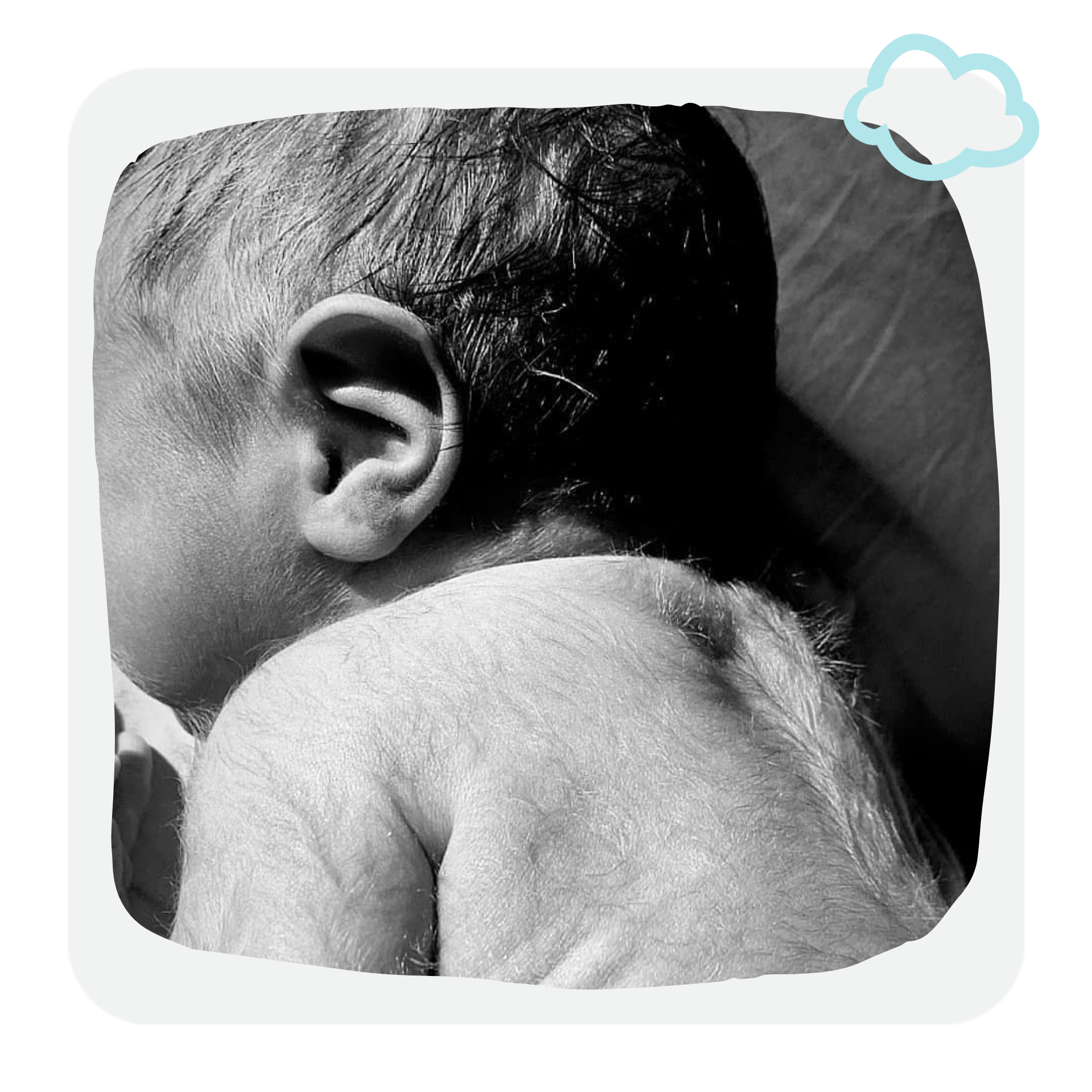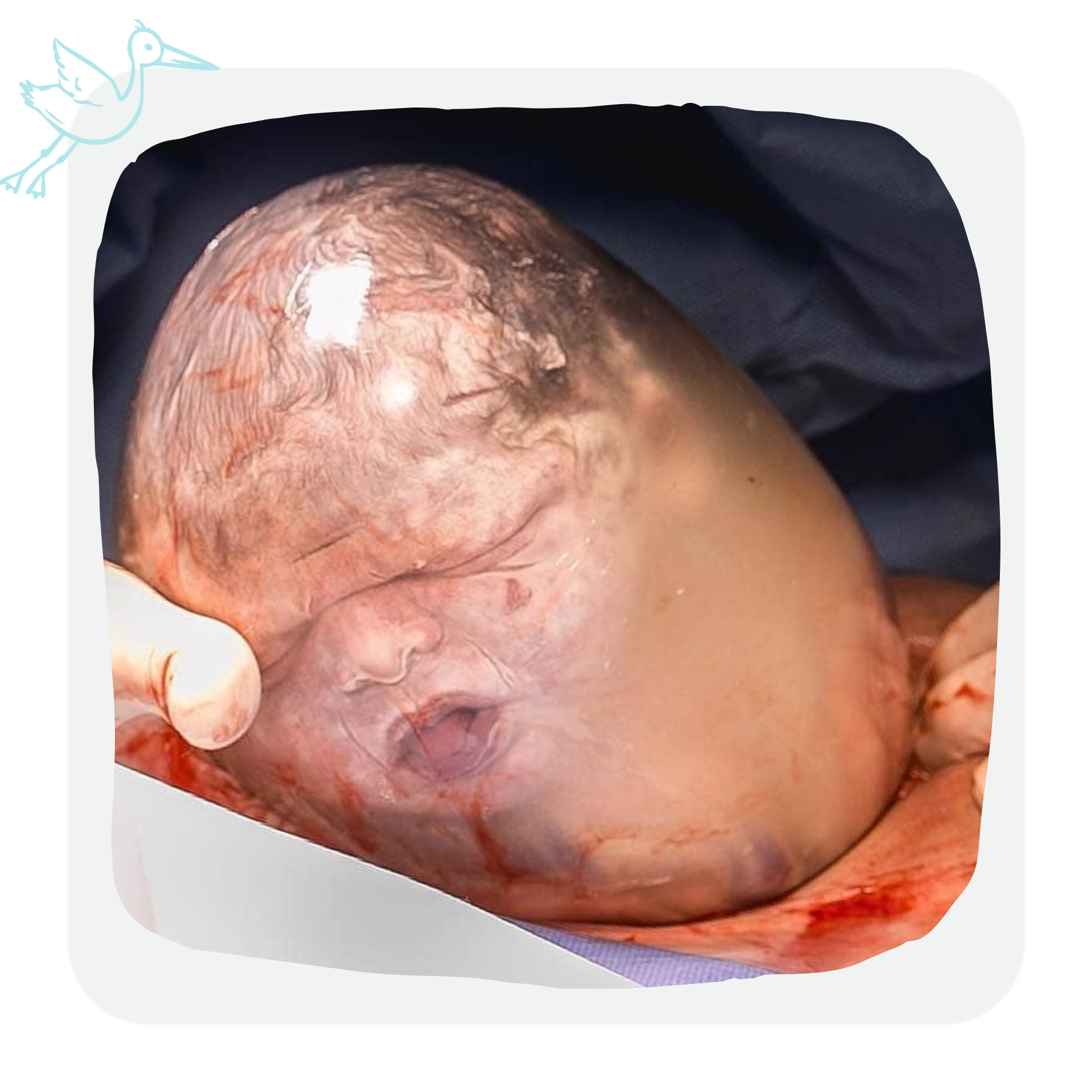10 Surprising & Fascinating Things About Birth
Pregnancy is such an exciting time for you and your co-pilot as you prepare to meet your little one - but what’s even more remarkable is the birth itself! Read on to find out 10 fascinating and surprising things you might not know about birth from the experts at Tiny Hearts Education.

1. Your baby is likely going to be covered in a birthday frosting, also known as vernix.
The white coating found on fresh bubbas is called vernix [well, vernix caseosa, if you want to get technical]. It occurs naturally in the last trimester of pregnancy, and it’s responsible for some pretty downright amazing things. Here are some fun facts about vernix:
- Keeping vernix on bub after birth means more hydrated skin
- Vernix acts as a protective barrier by minimising friction during delivery
- Some studies show vernix can help bub retain a normal temperature post-birth
- Vernix contains antimicrobial peptides and has a direct role in the defence against bacteria
- It’s been shown to have wound healing properties and may account for helping to heal perineal wounds following delivery
- Experiments show vernix can be just as effective as standard skin cleansers - but unlike soaps, provides additional moisturisation + infection control!
2. Your little one might perform a breast crawl.
A breast crawl involves the newborn babe being placed, skin to skin on mama’s abdomen just after birth. Bub will use their senses, mainly smell, to find their way to the nipple.
If this is something you would like to do, request that all interventions are delayed until the breast crawl is complete and the first breastfeed is accomplished.
3. Your baby might be born with ‘cone head’.
A newborn’s skull bones are soft, thin and flexible, meaning their head can change shape easily and might look a little odd. This can be caused by the head’s position in the uterus during pregnancy or because of the squishy passage down the birth canal. It will usually fix itself within about six weeks!
If you notice your little one’s head hasn’t gone back to a normal shape by about two months of age, see your doctor for an assessment.

Photo credit: @birthstoriesbyalexandriamooney
4. A comb might help you with your labour pains.
Surprisingly, using a comb during labour can help ease pain! The comb should be gripped in your hand, sitting across the palm so that the teeth can hit the base of the fingers.
Not only does it help hit acupuncture points, but it also supports the gate control pain theory. This theory states that the brain can only focus on a few sensations at once. The pain generated from squeezing tight on the comb essentially helps the brain forget about the contractions! It does this because the pain travels to your brain faster as the nerve endings are closer on your hands. How amazing!
5. Your newborn might be covered in fuzz.
There might be a soft, peach fuzz covering your baby’s back, shoulders, arms and feet when they are born. It’s officially known as lanugo and is actually the first hair made by the body! Newborns need this extra layer to protect their skin and regulate their body temperature in the womb. Lanugo usually falls out within a week after birth, but for some, especially those bubbas born prematurely, it can last a bit longer.

Photo credit: @sarahfairlight
6. Your doctors or midwives will use the APGAR score system to assess your baby’s health.
Once your little one arrives earthside, your team of doctors and midwives will use the Apgar score system to assess your newborn’s health.
The APGAR score checks five characteristics of your baby, and these are:
- Skin colour
- Heart rate
- Reflexes and responsiveness
- Muscle tone
- Breathing rate
Each characteristic is rated from 0 to 2, with 2 being the best score. This gives you an APGAR score out of 10 for your baby!
But what does this actually mean? A score of 7 or more is normal. A score of 6 or less at 1 minute and a score of 7 or more at 5 minutes is normal. However, a score below 7 in the second test is considered low.
A low APGAR score warns doctors to check your baby for problems such as breathing difficulties and helps to make sure your little one is given medical attention when it is needed. The APGAR score is just one piece of information doctors, and nurses have. It’s a guide, but only a guide. It does not mean there are going to be problems later in life.
7. The first milk you produce for baby is colostrum, aka liquid gold!
The first milk you produce when you start breastfeeding is colostrum, and it’s the ideal nourishment for a newborn. Here are some of the quick facts about this magical liquid:
- Up to 2/3rds of the cells in colostrum are white blood cells that guard against infections
- Colostrum helps to support your baby’s immune system and gut function
- It contains vitamins and minerals including vitamin A, magnesium and zinc
- Colostrum has a similar make-up to amniotic fluid (which your baby has been swallowing and excreting in your womb) which makes it the perfect transition to the outside world
- It helps to protect against tummy upsets and acts as a laxative to help your newborn poo more frequently - this, in turn, reduces their risk of jaundice
8. You could have a super rare en-caul birth.
An en-caul birth occurs when the infant is born inside the entire amniotic sac. The sac balloons out at birth, with the child remaining inside the unbroken or partially broken membrane.
This is super rare - occurring in fewer than 1 in 80,000 births!

Photo credit: @janabrasilfotografia
9. An incredible substance called Wharton’s jelly helps prevent a knot occurring in your babies cord.
Wharton’s Jelly is a gelatinous substance that wraps around your baby’s umbilical cord. And yes, it does feel like jelly!
Wharton’s Jelly acts to prevent a knot occurring in your babies cord. If a knot develops, it acts as a layer of protection that keeps blood flowing between your baby and placenta, even if there is a loose knot or nuchal cord. It becomes especially important when pushing your baby out because as you push, everything becomes squished. Luckily for us, the Wharton’s Jelly helps protect your baby from the tight hug of the uterus during birth.
However, Wharton’s Jelly cannot protect your baby from all umbilical knots. The exception is what is known as a true knot. This is a tight knot in the umbilical cord that CAN’T move up and down. With a true knot, a baby might run into trouble during pregnancy or the birthing process. This occurs in between 0.3-2.2% of babies.
The best thing you can do to monitor for knots is monitoring your babies movements! If you are concerned about your baby’s movements, please call your health provider.
And remember, in the majority of cases, the Wharton’s Jelly does its job and helps bring a beautiful baby into the world safely.
10. And finally - the BRAIN acronym, it might be your saviour in the birth suite.
I want to introduce you to your birth suite secret weapon - the BRAIN acronym. This bad boy will well and truly empower you through pregnancy and birth.
The acronym BRAIN stands for benefits, risks, alternatives, intuition, nothing. Ask yourself, your partner, your support people, and medical staff these questions if and when a procedure or intervention becomes necessary:
- Benefits: What are the benefits of doing this? How will this have a positive impact on me, my baby and my experience in labour and welcoming my bub to the world?
- Risk: What risks are associated if I do this? How might this negatively impact me, my baby or my experience?
- Alternatives: What else could be done? Are there other ways around this? I want to weigh up all of my options.
- Intuition: Tune in and listen to that incredibly powerful, yet often overlooked, intuition you have. You and your baby are connected, and that connection is more powerful than anything. What is my gut telling me?
- Nothing: What happens if we do nothing? Can this procedure be delayed? Can I have some time to think about it? What will happen if I choose to watch and wait for now?
In an emergency, you are really trusting your providers to look out for your best interest. In a true emergency, there may not be time to explain every possible choice and its repercussions. That’s why it’s essential to be with a provider that you trust. That said, it’s important to remember that most situations in birth are not emergencies, so you should have time to ask questions and get all of the information you need!
The BRAIN acronym is one of the many tools we teach expectant parents in our birth course. It’s information like this that you will draw upon during birth that will make you so grateful you have the knowledge.
Visit Tiny Hearts to book in an online class so you and your co-pilot can be prepared to use your BRAIN during labour!





Leave a comment